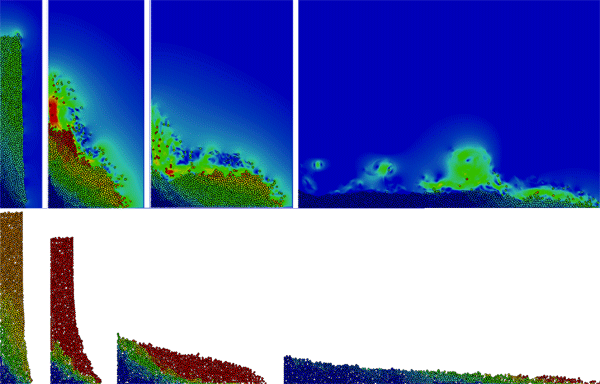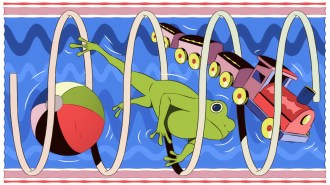- More than 2 years ago
View the videos
Snowboarders and marine engineers both worry about avalanches, but the latter may have a tougher job when working underwater. They have to understand not only what makes a cliffside collapse, but also how fluid between sand grains affects the flow.

Physicists have now simulated how that process happens. A team led by Farhang Radjai of the University of Montpellier in France developed calculations for how particles flow when they collapse from a tall stack. Different simulations tackled particles that were dry, that were wet as if with water, or that were immersed in a stickier, more viscous liquid.
Having water in the mix, the scientists found, means that the grains collapse more slowly at first than in a dry avalanche. But as the landslide continues to fall, the fluid helps lubricate the grains and keeps them moving along. In the end, surprisingly, the dry avalanche and the wet avalanche traveled about as far, just in different ways. The viscous flow stopped much shorter.
The discovery could help marine workers who have to protect underwater cables and oil rigs from the threat of landslides. (A 1929 landslide off the coast of Newfoundland snapped several transatlantic cables.) Understanding how fluid affects particle flow might also help engineers develop better industrial processes that use powders to make food or drugs, the scientists report November 2 in Physical Review Letters.
An underwater pillar of grains collapses slowly in this simulation (red represents fastest movement). Even so, the flow travels quite a distance horizontally — an observation that might explain why underwater landslides travel as far as they do.
Credit: Group of F. Radjai/Univ. of Montpellier
In contrast, a pillar of grains without lubricating fluid collapses more rapidly at first, though the dry grains eventually spread out to almost the same distance as the wet ones do.
Credit: Group of F. Radjai/Univ. of Montpellier






